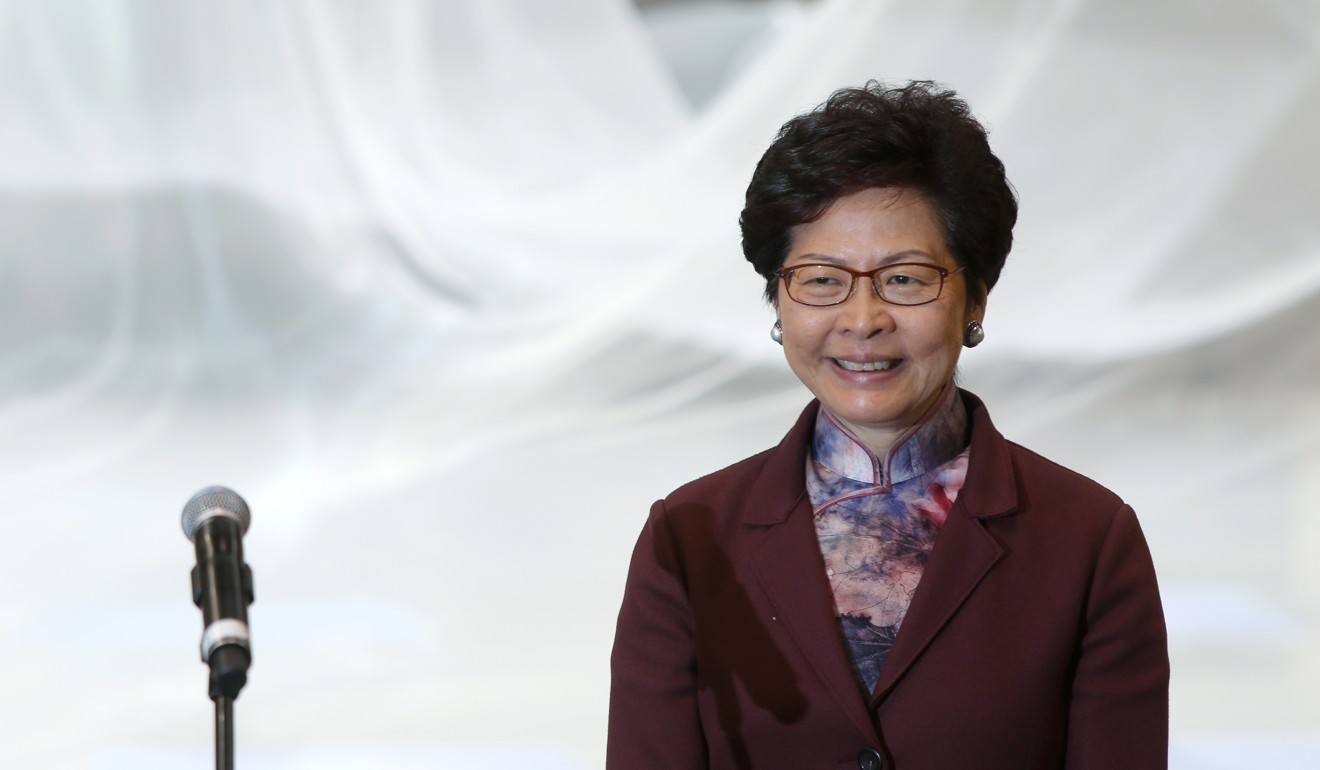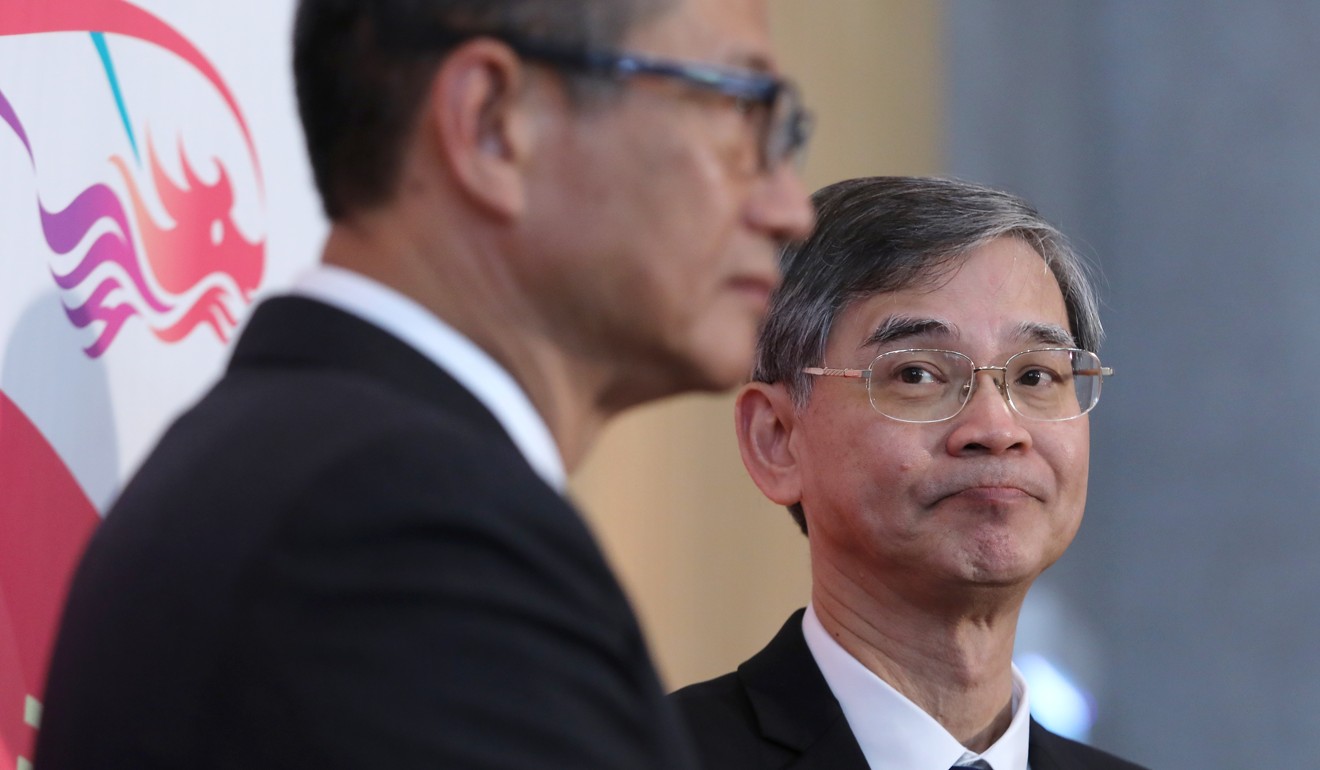
HK$17.2 billion MPF subsidy offered as Hong Kong officials push to ditch controversial offset mechanism
Chief Secretary Matthew Cheung and Secretary for Labour and Welfare Law Chi-kwong try to drum up support from business sector and workers’ representatives for new proposal

Top officials have started to lobby support for a long-awaited move to stop Hong Kong employers from dipping into workers’ pension funds for severance and long-service payments, with a commitment of HK$17.2 billion (US$2.2 billion) to help ease the burden on small businesses for 12 years.
The proposal was put to business and labour representatives in closed-door meetings on Thursday as Chief Secretary Matthew Cheung Kin-chung and Secretary for Labour and Welfare Law Chi-kwong tried to win support from both sectors.

However, some business representatives remained sceptical about the government proposal on scrapping the much-criticised Mandatory Provident Fund (MPF) offsetting mechanism, saying its implementation would be too complicated for small and medium-sized enterprises (SMEs) to handle, and that they would bear a heavy financial burden after the subsidy period expired.
Chief Executive Carrie Lam Cheng Yuet-ngor said on Tuesday the offsetting mechanism had been undermining retirement protection for employees, defeating “the very purpose of setting up” the scheme.
Speaking after the meetings on Thursday, Law reiterated the government proposal was still preliminary and subject to changes.
“This proposal is a very initial one, and not the government’s final decision. We understand that there are different views from the business sector because if the offset mechanism is removed the employers will need to dig deeper into their pockets for the severance and long-service payments,” he said.
“We hope that through our communication with the stakeholders, we can win their support ... We are determined to resolve this issue and remove this offset mechanism within this term of government.”
We are determined to resolve this issue and remove this offset mechanism within this term of government
Under the proposal, the government will remove the offsetting mechanism by offering employers a subsidy of HK$17.2 billion to tide them over a 12-year period, more than double the HK$7.9 billion proposed by former chief executive Leung Chun-ying.
The calculation of severance and long-service payments will remain unchanged at two-thirds of an employee’s last month’s wages multiplied by the number of years of service, capped at HK$390,000.
Employers will need to set up a savings account and contribute the equivalent of 1 per cent of employees’ wages to cover relevant payments in the long term.
It is estimated the number of accounts will reach 280,000 and they can be set up as an e-MPF platform to be introduced in 2022. When the accumulated amount is equivalent to 15 per cent of the total staff wages, the employer can stop making the 1-per cent contribution.
From the fourth year onwards the percentage of the subsidy will be decreased gradually, meaning employers will have to cover part of the payments from their own savings accounts.
The government subsidy scheme will be rolled out as a complex, two-tiered system, which a source explained was aimed at offering greater subsidies to SMEs as they usually did not have enough money in their savings accounts.

The source said the government expected to make a final decision this year and get the Legislative Council’s approval before 2020.
“After the passage of the bill, it takes about two years to design the details and supporting measures so we expect to implement it in 2022,” the source said.
Considering the subsidy and savings accounts, the government estimated that in the first year of implementation, the city’s employers would have to fork out HK$21 million for the payments and in the 10th year the amount would snowball to HK$1.2 billion. In 2016, Hong Kong employers spent more than HK$3 billion on those payments.
However, Liberal Party lawmaker Felix Chung Kwok-pan, who represents the textiles and garment trade, said most of the business sector would oppose the plan.
“The 1 per cent savings account will involve too much administrative work for SMEs and will not be enough to resolve the long-term financial burden imposed on them. The subsidy scheme is also too complicated for SMEs to comprehend,” he said.
“If a five-employee SME sacks a worker, it will amount to 20 per cent of its operating cost. How can the 1 per cent savings account help ease the financial plight of SMEs after 12 years?”
Chung said they had counter-proposed that the government set up a central fund mechanism with employers contributing 1 per cent of their staff’s salaries. This would help any companies needing to meet severance and long-service payments.
“This cuts the need for each company to set up an individual savings account and also serves the need to help each other out. But the government dismissed our proposal fearing abuse by employers,” he said. “But which company would casually sack people just for the sake of claiming money from this central fund?”
Eddy Li Sau-hung, vice-president of the Hong Kong Chinese Importers’ and Exporters’ Association, agreed that the proposal was very complicated, saying he was concerned whether the new generation of businesses was willing to bear this responsibility.
“We have three big concerns,” he explained. “Firstly, the savings accounts would involve a lot of administrative cost – who will pay for it? Secondly, is it fair to the business sector by suddenly forsaking a long-standing offsetting system? Lastly, after the 12-year tide-over period has passed, will the start-ups and SMEs be willing to bear this financial burden?”
Firstly, the savings accounts would involve a lot of administrative cost – who will pay for it?
Chau Siu-chung, an employees’ representative on the Labour Advisory Board, said he basically agreed with the proposal but needed to study the details.
Yu Mei-wan, who has been working as a security guard since 2002, welcomed the government proposal. Her MPF was offset some eight years ago, and Yu described the mechanism as utterly unfair, especially for security guards whose contracts might often be terminated by employers every few years.
“It is like raiding my wallet,” she said. “And we constantly live in fear as we do not know when it will happen again.”
But Yu was not optimistic that she would benefit from the scheme before her retirement as she did not know how long the legislature would take to endorse it. She said she feared the proposal would encourage employers to sack long-serving staff.
Additional reporting by Jeffie Lam